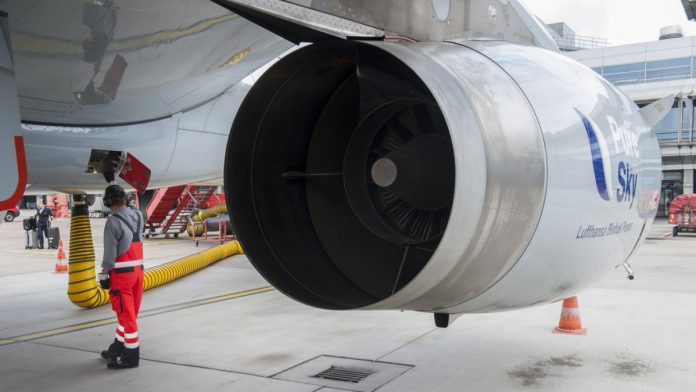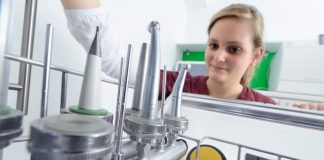Airbus boss Guillaume Faury had hinted at the topic a few times in the past few months. In an interview with a French radio station, he first hinted that Airbus might be investing in new aircraft models again, and a few days later he repeated the statement at an event organized by the French aviation association Gifas, but he remained largely vague. And now, a few days before the big Paris Air Show, which begins next Monday at Le Bourget Airport, he’s (almost) letting the cat out of the bag: “We need a new generation of aircraft,” says Faury.
Faury’s statement is a signal that the industry has been waiting for for a long time and is of great importance for everyone involved and for the competition. Aviation has committed itself to the Paris climate goals as part of a self-commitment, making it the official goal of flying climate-neutral from 2050. There are probably far more people in the sector who, at least in secret, doubt that this is really possible than optimists – the technical difficulties are simply too great. Until recently, however, the aircraft manufacturers in particular did not do much to change the impression: they primarily relied on the so-called Sustainable Aviation Fuels (SAF) made from biomass or synthetically produced sustainable fuels and technologies such as hydrogen, which may have a long-term effect, but will hardly be able to significantly improve the climate balance of air traffic by 2050.
“We need planes that use 20 to 25 percent less fuel than they do A320neo or A321neo of today,” demands Faury. “We are preparing all the technologies for the aircraft, the production system, digitization, so that we can use data better.” According to Airbus Faury, the year 2035 has been set as the target, then the new Airbus machine should However, according to the Airbus boss, the market entry could be delayed by a few years, to 2040 at the latest.
In aviation, the development cycles are much longer than in the automotive industry, for example, where a new model comes onto the market every few years. The A320-Family, the Airbus standard aircraft for short and medium-haul routes, was first delivered in 1988 and has been repeatedly modernized since then. The first version of the Boeing 737 dates back to 1968. The certification procedures are now so complicated that manufacturers need almost ten years from the official start of the program until the first delivery. In other words: Airbus is already running out of time, because a lot of preparatory work is still needed before the Supervisory Board can approve the necessary investments in the tens of billions. “We are only a few years away from the point where we need to have all the technology ready, the industrial concept, the partners and the suppliers,” says Faury. “We are preparing the replacement of model series, not just upgrades.”
The market segment that Airbus is targeting is clear, but many details are still open. It’s about short and medium-haul routes, such as Lufthansa’s European network or the domestic flights of the major American airlines. Of the A320series, Airbus has sold more than 17,000 machines. In demand are jets from around 170 to 250 or more passengers in several versions that can fly just as far and just as fast as the current models, only much more economically and with engines that are designed for the use of synthetic fuel.
Competitor Boeing has also started working on a successor to Boeing 737 to work. As part of a research contract from NASA, the US manufacturer is building a technology demonstrator with particularly thin, heavily swept wings supported on struts (the so-called truss-braced wing). On this basis, a new Boeing model could also be delivered from 2035 if everything goes without delay.
The engines could look different in the future
The planned Airbus aircraft is not yet to be powered by hydrogen – a presumably much smaller machine from the “ZeroE” research project is also planned for 2035. For the first decades of decarbonization, aviation relies primarily on sustainably produced fuel. According to calculations by the International Air Transport Association (IATA), this should contribute around two thirds to achieving the climate targets. But Faury describes the problem: “SAF are significantly more expensive than kerosene and will remain so for the foreseeable future. Today, airlines in Europe pay 3.5 to five times as much for SAF, measured against the price of conventional kerosene.” By 2050, and actually earlier, aviation must not only be technically but also commercially capable of switching to 100 percent SAF use – provided that it is possible to produce so much synthetic green fuel at all. That is why it is so important to develop aircraft that consume less of it from the start.
What the next machines from Airbus and Boeing will look like also has decisive consequences for the other large companies in the industry, above all the engine manufacturers GE Aerospace, Pratt & Whitney and Rolls-Royce. GE is working on the RISE project with Safran, its French partner in the CFM International consortium. The abbreviation stands for Revolutionary Innovation for Sustainable Engines. The engines should no longer be surrounded by a housing like today’s jet engines, but drive large open rotors. GE expects great advances in efficiency, and Airbus boss Faury is extremely interested: “We see this as a promising technology,” he says. But there are still many unanswered questions.
If Airbus opted for the RISE technology, the consequences would be serious. The engines take up significantly more space than today’s, so the wings would have to be attached to the top of the fuselage, so the planes would look significantly different. And the competition from Pratt & Whitney, linked to the Munich group MTU Aero Engines, would either have to develop open rotors as well or would risk being left out in the next generation of Airbus aircraft.
Airbus and Faury will have to make a decision very soon, because everything else depends on the basic architecture of the aircraft. But it is also clear to Faury that hydrogen is the right drive for the very long term. It is therefore also “completely wrong” to believe that Airbus is saving on the ZeroE project because of the work on the next machine. “We believe in hydrogen,” says Faury. “We’re working on it, and we’re going to bring a hydrogen aircraft to market.”



